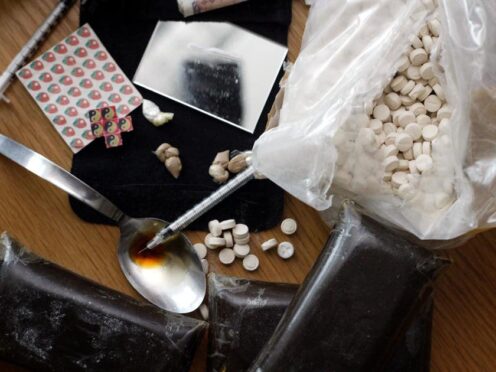
Progress has been made in increasing the number of residential rehabilitation placements for drugs treatment but “substantial barriers” remain, analysis has found.
Public Health Scotland (PHS) carried out an evaluation of the Scottish Government’s residential rehabilitation programme, which was first announced in 2021.
Backed by more than £11 million in funding, it was a key part of the “national mission” to tackle Scotland’s drugs death crisis.
Angela Constance, who at the time was Minister for Drugs Policy, pledged to increase rehab placements to 1,000 people a year by 2026.

The SNP minister told MSPs she wanted to ensure that “everyone who wants residential rehabilitation, and for whom it is considered clinically appropriate, can access it”.
The PHS report, released on Tuesday, said there has been an 8% increase in residential rehab bed capacity since 2021.
In 2022-23 there were 812 placements, with PHS saying the upward trend in these suggests the Government is on course to meet its target of 1,000 by 2026.
However, the report noted that some of these placements were shorter in duration and difficulties in data-gathering made it hard to draw firm conclusions.
The report added: “There is evidence that substantial barriers to accessing residential rehab remain.
“A 2023 survey of individuals able to refer for rehab, found that only 24% of respondents agreed that residential rehab is easily accessible.
“In a 2023 survey of individuals with experience of using drugs, only 19% felt reasonably well informed about residential rehab.”
PHS said some areas of Scotland have seen more progress than others, while half of the alcohol and drug partnerships (ADPs) reported funding constraints.
Ongoing problems include a lack of staffing and long waiting times for detoxification.
The PHS report said the Government should clarify its stated ambition around ensuring that everyone who wants rehab will be able to access it.
Transparency is needed around what individuals seeking rehab can expect when resources are constrained, the report said.
A Scottish Government spokesman said a final report on the residential rehab programme would be published in 2026.
The spokesman said: “We welcome this interim report on the first two years of our residential rehabilitation programme which suggests it is likely to be contributing to improving access.
“Evidence also suggests that we are on track to meet the target of 1,000 people publicly funded to go to rehabilitation by 2026, with an estimated 8% rise in capacity and publicly funded placement approvals increasing to 812 in 2022-23.
“While three-quarters of respondents reported that getting into rehabilitation had been very easy or quite easy, it also highlighted that challenges remain.
“We’ll use these findings to improve the programme and work is already underway to address many of the issues raised.
“As part of our £250 million national mission on drugs we’ll continue to work hard with partners to break down barriers to access.
“We’ll also continue to work with PHS to improve data to help inform our strategy.”
However, the Scottish Liberal Democrats said the report showed progress on tackling drugs deaths is too slow.
Party leader and health spokesman, Alex Cole-Hamilton, said: “This report confirms the woeful progress on tackling Scotland’s drug emergency.
“We have a drugs death emergency that is still the highest in Europe.
“The Scottish Government’s chaotic budget will only sharpen these failures, as it plans to deliver a real-terms cut to drug services.
“People are sick of the well-meaning words and promises. I want ministers to protect and strengthen the drug and alcohol budget so that everyone can access care when they need it.”

Enjoy the convenience of having The Sunday Post delivered as a digital ePaper straight to your smartphone, tablet or computer.
Subscribe for only £5.49 a month and enjoy all the benefits of the printed paper as a digital replica.
Subscribe